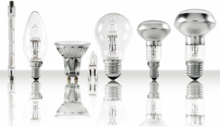Switching to energy-efficient lighting has never been easier

Upgrading a building’s existing lamp technology not only brings energy savings, but the latest technology is also longer lasting which significantly reduces maintenance costs — as Dave Ellis explains.
In the current climate, there is increasing pressure placed on building-services engineers and facilities managers (FMs) to reduce a building’s energy wastage and carbon emissions wherever possible. Since October 2008, it has been a legal requirement to own an Energy Performance Certificate that provides A to G ratings for the building, with ‘A’ being the most energy efficient. Businesses must display this certificate to show the energy efficiency of the building.
A simple means of reducing energy usage and improving the efficiency of a building is to make the switch to energy-efficient lamps, as they consume up to 80% less electricity than GLS lamps. The importance of retrofitting these lamps in a building has now been recognised by the recent EU Directive which calls for a complete phase out of inefficient lamps by 2016. Beginning in September 2009, incandescent lamps and other lighting products that are heavy users of electricity are being phased out to encourage the use of energy-efficient lighting. Starting with the most inefficient lamps, the ban will come into effect over eight years until only energy- efficient alternatives are available in the UK and all other EU member states.
Although the onus will be on retailers and manufacturers to ensure only approved lamps are available to purchase, building-services engineers and FMs should begin the switch to energy- efficient replacements sooner rather than later in order to achieve the greatest cost and energy savings.
The market now accommodates a wide range of energy-efficient lamps which can be retrofitted in a building to improve its efficiency. Halogen lamps that fit virtually any light fitting are one example of this. Osram’s new Halogen Energy Saver range allows easier retrofitting of all halogen and all existing incandescent lamps as they fit into traditional holders. This allows building engineers and FMs to avoid the large investment costs and significant time allocated to retrofitting them in the past, which might have prevented a switch to energy-efficient lighting.
Energy-saving lamps have evolved rapidly in the past decade and offer numerous benefits. Although energy-efficient products are initially more expensive to purchase, in most cases they pay for themselves after only one year through lower electricity costs. Lighting accounts for 10 to 15% of the overall electricity bill, which means that there is potential for substantial savings to be made. Although energy efficient lamps use up to 80% less electricity than a standard incandescent bulb for the same amount of light.
According to the Energy Savings Trust, new research shows that we can also save an average of £1 billion and 3.9 Mt of CO2 emissions a year by switching to energy-efficient lamps.
Depending on the product, energy efficient lamps have a lifespan of six to 15 years, helping to reduce maintenance costs overall. For example, specifying the Osram Dulux T/E HE lamp provides a service life of 20 000 h, considerably extending the maintenance cycle in comparison to an inefficient counterpart. In addition, optimum lighting conditions can be created while ensuring energy savings of up to 30%.

Another advantage of switching to energy-saving lamps such as compact fluorescent lamps (CFLs) is that they emit much less heat than incandescent bulbs, therefore reducing the energy consumption of air conditioners in the office.
In addition to lamps for general illumination, exit lighting offers an ideal place to make energy and cost savings. A substantial amount of energy is used to power an exit sign in a building because by law any exit sign must remain illuminated 24 h a day, 365 days a year. Replacing the lamps in all exit signs with high-efficiency light-emitting diodes (LEDs) will save a considerable amount of money in the long term. LEDs use a fraction of the energy that conventional exit-sign lamps consume. Inexpensive retrofit kits make it simple to replace inefficient lamps with LEDs without having to replacing the entire sign.
It is important that building engineers and FMs understand just how important switching over to energy-efficient lighting is in terms of not only conserving energy but also saving money and reducing CO2 emissions. With lighting manufacturers such now making it easier for businesses to replace incandescent lamps with energy-efficient bulbs there is no time like the present to start making those savings.
Dave Ellis is national sales manager – projects and specifications for Osram
www.osram.com







